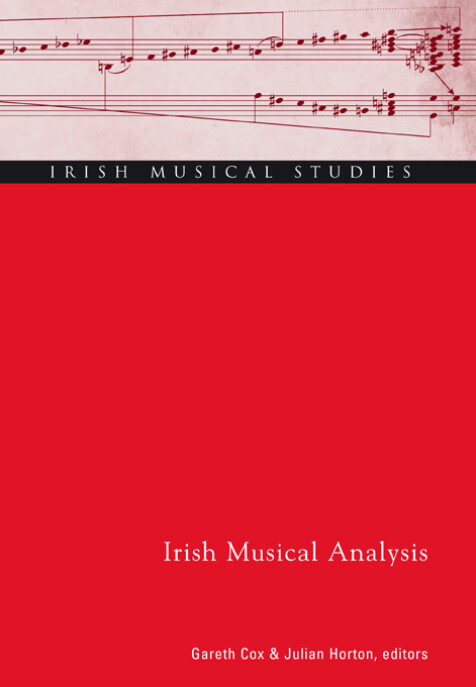Irish musical analysis
Irish musical studies 11
Gareth Cox & Julian Horton editors
I. From Schubert to Bartók
The ‘tightened bow’: analysing the juxtaposition of drama and lyricism in Schubert’s paratactic sonata-form movements
Anne M. Hyland
Schenkerian Ursatz and temporal meaning in Chopin’s Prelude Op. 28, No. 5
Antonio Cascelli
Shared compositional strategies in Chopin’s Nocturnes Op. 48
Alison Hood
Brahms, Bruckner and the concept of thematic process
Julian Horton
The sense of an ending: Adorno, Brahms and music’s return to the land of childhood
Nicole Grimes
Nielsen and Sibelius ‘between temperament and tradition’
Úna-Frances Clarke
Formal structure in the finale of Bartók’s Sonata for Two Pianos and Percussion
Michael Russ
II. Twentieth-Century Irish Composition
Technical focus and ‘stylistic cleansing’ in E.J. Moeran’s Sonata for Two Violins and String Trio
Fabian Huss
The bar of legitimacy? Serialism in Ireland
Gareth Cox
The ‘serial’ works of A.J. Potter
Patrick Zuk
Serial procedures in the early symphonies of John Kinsella
Séamas de Barra
Irish folk tunes and minimalist techniques in Eric Sweeney’s Concerto for Guitar (2004)
Hazel Farrell
Music as image: the impact of visual stimuli on the music of Kevin Volans
Adrian Smith
Multiplicities of musical language and select compositional devices in Roger Doyle’s Babel (1989–99)
Barbara Jillian Dignam
On constructing a sonic gangbang: system and subversion in Gerald Barrys’ Chevaux-de-frise
Mark Fitzgerald

